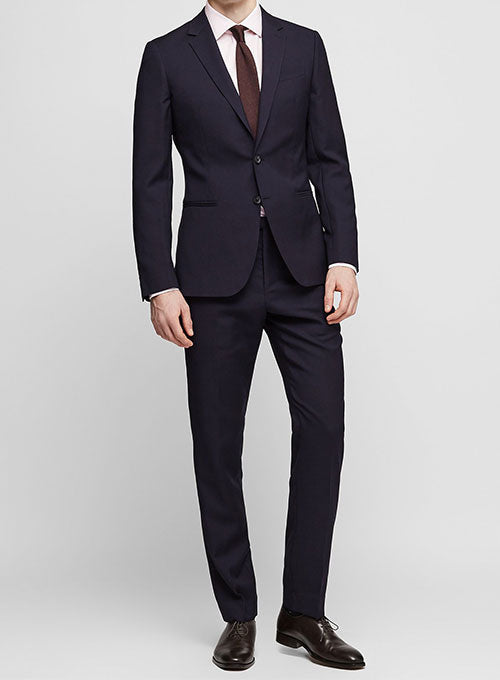Custom Suits Perth: Stick Out with a Made-to-Measure Suit
Custom Suits Perth: Stick Out with a Made-to-Measure Suit
Blog Article
Understanding the Tailoring Refine: From Textile Selection to Final Fitting for the Perfect Wardrobe
The tailoring procedure is an intricate interaction of art and scientific research, starting with the crucial decision of fabric choice and culminating in the specific modifications of last installations. Each textile type brings unique high qualities that influence not just the visual charm yet likewise the garment's durability and suitability for various celebrations. Comprehending the subtleties of customizing techniques can elevate one's wardrobe to extraordinary degrees of class. As we check out these elements further, one must take into consideration just how even the tiniest details can considerably influence the general result of one's personal style.
Significance of Material Selection
Picking the best fabric is critical in the tailoring process, as it straight influences the comfort, durability, and total visual of the last garment. The option of textile sets the structure for the garment's performance, performance, and design. Various materials have unique residential or commercial properties, such as breathability, stretch, and weight, which can significantly impact exactly how the garment drapes and fits the body.

A tailored item made from an ideal textile not only showcases workmanship yet also raises the user's confidence. Subsequently, comprehending the nuances of textile choice is extremely important for any type of customizing undertaking. It makes certain that the final product not only satisfies the aesthetic desires of the client yet also straightens with practical requirements, consequently accomplishing a harmonious equilibrium in between type and feature in the customized wardrobe.
Types of Fabrics and Their Usages
Recognizing the numerous kinds of textiles readily available is vital for making educated decisions during the customizing procedure. Each fabric possesses distinct characteristics that determine its viability for specific garments and celebrations.
Cotton, recognized for its breathability and softness, is optimal for sportswear and summer season clothes. Its flexibility enables it to be tailored into everything from shirts to outfits. Woollen, on the other hand, is favored for its warmth and structure, making it an outstanding choice for official fits and outerwear. Its all-natural elasticity aids garments preserve form over time.
Silk exudes high-end and is light-weight, making it best for eveningwear and fragile shirts; nevertheless, it calls for mindful handling because of its fragility. Linen, with its textured surface, is a prominent option for warm climates, supplying a crisp and ventilated feel, but it wrinkles conveniently, which might impact the garment's look.
Artificial textiles, such as polyester and nylon, deal sturdiness and resistance to wrinkles, making them suitable for everyday wear and active clothing. Recognizing these material kinds and their homes permits better decision-making, guaranteeing that each customized item not just fits well however additionally straightens with the intended purpose and celebration.
The Tailoring Strategies Discussed
The art of customizing relies upon a range of strategies that change material into well-fitted garments. Central to this procedure is pattern drafting, where a dressmaker develops design templates based on the client's the original source dimensions and preferred style. This first step ensures that the garment will fit the wearer appropriately prior to any reducing takes place.
As soon as patterns are established, reducing strategies enter into play. Precision is extremely important as see here now errors can lead to misfitting garments. Tailors usually use various cutting methods, such as single-layer cutting for complex layouts and multiple-layer reducing for effectiveness on standard patterns.
Basting is another vital method, allowing tailors to temporarily stitch fabric pieces with each other for a preliminary installation (custom suits perth). This approach provides the opportunity to evaluate the drape and overall shape before last sewing
Seaming methods, including flat-felled seams and French joints, improve the garment's durability and aesthetic charm. Tailors likewise utilize strategies such as interfacing and extra padding to offer framework and shape to details locations, like collars and shoulders.
Finally, completing strategies, including hemming and side completing, make sure the garment's longevity while offering a refined look. With each other, these techniques develop the foundation of efficient tailoring, causing elegant, tailor-made apparel.

Fitting Adjustments and Considerations
After the first customizing techniques have actually been applied and the garment is built, suitable changes come to be vital to achieving the ideal fit. These changes deal with numerous facets of the garment, ensuring it contours to the wearer's physique and improves overall look.

The surge of trousers is an additional essential factor; it should rest you can look here pleasantly over the hips without causing pain, permitting simplicity of movement. Hemming lengths for both trousers and skirts should reflect the user's preferred design while valuing percentages.
Additionally, attention needs to be provided to the rear of the garment, making certain that there are no unattractive pulls or excess material - tailor tuxedos perth. Each change should be thoroughly taken into consideration, as even minor modifications can significantly affect the overall fit and visual of the customized item, inevitably leading to a closet that shows confidence and elegance
Keeping Your Tailored Attire
Correct upkeep of customized garments is necessary to protecting their fit and look with time. To make certain long life, normal cleansing is extremely important. Constantly comply with the treatment tag instructions, which may recommend completely dry cleansing for fragile textiles or machine washing for even more sturdy products. Avoid constant laundering, as this can put on down the material and alter the garment's shape.
Storage space is similarly important; usage cushioned hangers for coats and layers to keep shoulder framework, and store trousers folded nicely or hung to avoid creasing. Secure garments from straight sunshine, which can fade shades and damage fibers.
Furthermore, routine evaluations for small repair work can stop larger concerns. Look for loosened buttons, fraying seams, or signs of moth damages, addressing these problems immediately to keep the garment's stability.
Last but not least, think about seasonal turning. Putting on customized items in small amounts allows materials to recover, extending their life expectancy. By carrying out these upkeep methods, you can make sure that your tailored garments remain as pristine as the day you initially wore them, enhancing your perfect closet for years to find.
Final Thought
The tailoring procedure, incorporating material choice, competent techniques, and specific suitable adjustments, plays an essential role in developing garments that improve both convenience and style. Each phase contributes to the overall effectiveness of the end product, ensuring that clothing not just fits well however likewise mirrors individual identification. In addition, comprehending the significance of maintenance expands the life of tailored garments, solidifying their worth in a well-curated wardrobe. A comprehensive technique to customizing finishes in a refined and confident appearance.
Report this page